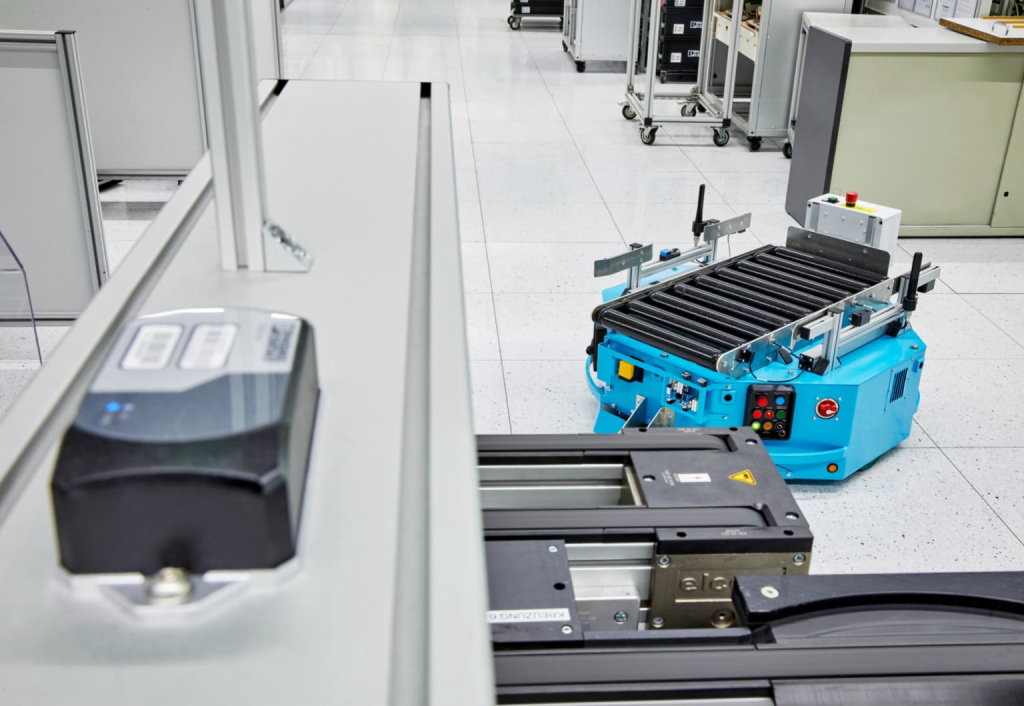The key to efficient, sustainable, and reliable operation
Phoenix Contact aims to address climate change challenges by focusing on the All Electric Society, a world with abundant and affordable renewable energy. This involves optimizing communication infrastructure in manufacturing, reducing primary energy demands, and increasing machine efficiency. Companies must support this development across all areas, particularly in production, to avoid a competitive disadvantage. Technological approaches like Industry 4.0 and powerful network infrastructure are essential for rapid response to changing market and environmental conditions.

New automation approaches in the logistics sector
Industry 4.0 involves digitalizing and networking automation devices within and across a company, using technologies like WLAN, Bluetooth, and 5G. The Internet of Things (IoT) integrates even the smallest devices and new automation approaches like automated guided vehicles. This approach improves manufacturing system availability, performance, and quality while increasing flexibility.

Wi-Fi 6 with up to 70 percent lower latency
Industrial trends like IoT and AI demand high-performance systems for data availability, latency, and throughput. Wireless LAN (WLAN) solutions can extend or replace wired data transmission, simplifying handling of mobile machines and docked parts. The Wi-Fi 6 standard has increased theoretical data transmission speed by 30% and reduced latency by up to 70% through Multi-User MIMO. The Wi-Fi 6(E) extension offers license-free 6 GHz frequency band with additional 80 MHz and 160 MHz channels, allowing for additional WLAN networks without mutual interference.

Compact and robust wireless modules for AGVs and AMRs
Phoenix Contact has developed FL WLAN 1010 and FL WLAN 1100 wireless modules for automated guided vehicle (AGV) and autonomous mobile robot (AMR) systems. These modules address the challenges of reliable data connection, limited installation space, quality wireless communication, QoS availability, vehicle robustness, and diagnostics and maintenance functions. The integrated REST interface allows for easy installation in vehicles, saving time and eliminating incorrect configurations during vehicle commissioning.

Careful planning of the wireless channel design
WLAN building infrastructure is crucial for AGVs/AMRs, with proper placement of access points, metal installation, and suitable antenna positioning determining wireless coverage. Simulation tools can help determine coverage and reflections. Careful planning of wireless channel design and application can reveal potential issues early. Designing WLAN infrastructure can be complex and requires experience. Phoenix Contact specialists offer support in WLAN infrastructure design.

Learn more about Digital Factory.

